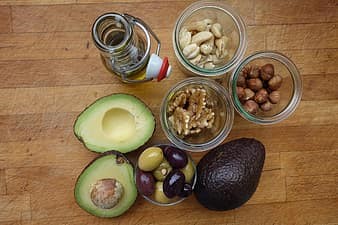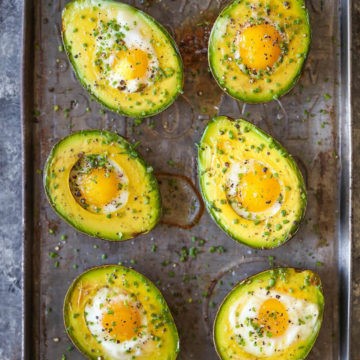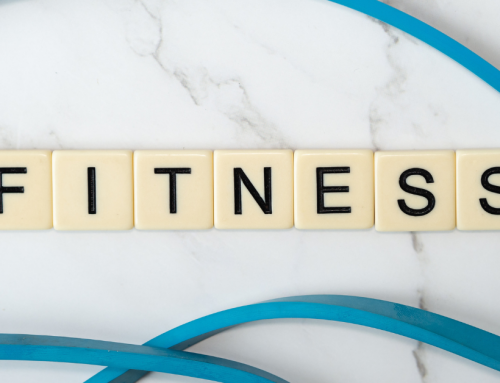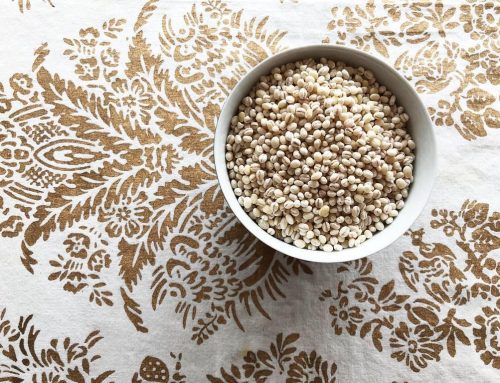Keto Fats That Fuel
The fats that we ingest keep our muscles strong and our minds sharp. Food is energy, eating correctly for your body type, goals, and individuality will change many factors in your life. It is not a secret or mystery that the gut microbiome greatly impacts our overall health and happiness. When your gut is happy and healthy it sends serotonin to your brain! It’s an irrefutable connection, eating keto will be an adjustment for your gut at first.
Here are some of the best fats to eat on keto to keep you on track and feeling your best.

Searching for keto fats that fuel your body will whirl a plethora of products into your shopping cart. There are hundreds of keto instant coffees, MCT oil products, keto fat bombs, keto snack bars, and other miscellaneous keto products that are made to support your keto journey and make it easier.
We are all looking for convenience products to make our busy stressful lives feel a little bit easier. Everyone is looking for a quick fix to stay on track with their keto decision, these fat bombs will fill in the gaps, but they aren’t necessarily full of the good fats that your body needs to stay properly fueled and functioning.
1) AVOCADO

I feel like I talk about avocados the most! This superfood gives your body so much! Whether you are on keto or not, avocados should be included in your diet often. They are nutritious, versatile, and delicious, there are so many ways to enjoy avocados, guacamole, grilled, plain, with a fried egg on top, stuffed with butternut squash, stuffed with cheesy meat.
Around the world, avocados are referred to as fruits, vegetables and some people call them berries. Avocados are grown on trees. A member of the Lauraceae plant family.
Avocados are native to Mexico and Central America but can be cultivated in many areas around the world, including North America. I reside in the beautiful state of Florida, where I grow my own avocado tree in my backyard. The “berries” that the tree produces are plentiful and delicious, growing my own tree has allowed me to learn a variety of new avocado recipes. Avocado pudding, avocado with egg, are some of our favorites at home.
Here is the nutrition breakdown for a 7-ounce (201-gram) avocado:
- Calories: 322
- Fat: 30 grams
- Protein: 4 grams
- Carbs: 17 grams
- Fiber: 14 grams
- Vitamin C: 22% of the daily value (DV)
- Vitamin E: 28% of the DV
- Riboflavin (B2): 20% of the DV
- Vitamin K: 35% of the DV
- Niacin (B3): 22% of the DV
- Pantothenic acid (B5): 56% of the DV
- Pyridoxine (B6): 30% of the DV
- Folate: 41% of the DV
- Magnesium: 14% of the DV
- Potassium: 21% of the DV
- Copper: 42% of the DV
- Manganese: 12% of the DV
Do not fear, the avocado is here! This unique fruit is loaded with fats. In fact, avocado is about 80% fat, by calories, making them even higher in fat than most animal foods.
HealthLine has a lot of great things to say about avocados:
As you can see, avocados are exceptionally nutritious fruits and are a concentrated source of healthy fats and fiber, plus a number of vitamins and minerals.
They’re rich in nutrients that are often lacking in many people’s diets, including magnesium, B6, vitamin C, vitamin E, and folate (4 Trusted Source).
For example, half of an avocado packs 10% of the DV for potassium. Potassium is considered a “nutrient of public health concern” by the U.S. Department of Health and Human Services. This is because it’s a mineral that Americans commonly do not consume enough of (5 Trusted Source).
In fact, a study that included data on 4,730 U.S. adults found that fewer than 3% had potassium intakes greater than the set adequate intake for potassium of 4,700 mg per day (6 Trusted Source).
Potassium is needed for several critical bodily functions, including blood pressure regulation and nervous system function. Getting the recommended amount of potassium on a daily basis may help protect against hypertension and stroke (7, Trusted Source).
Avocados also provide nutrients that are essential for the health of the immune system, including vitamin C, B6, and E (9 Trusted Source, 10 Trusted Source).
Half of an avocado provides 30% of your daily needs for B6, a nutrient that helps suppress inflammation and protect against oxidative damage. Inadequate B6 intake may negatively impact immune function and increase susceptibility to illness (9Trusted Source, 11 Trusted Source, 12 Trusted Source).
While severe B6 deficiency is rare, having suboptimal or slightly deficient levels is more common, even in the United States and Canada (13 Trusted Source).
Avocados contain an abundance of nutrients that are essential for optimal health, and regularly consuming avocados could help improve overall diet quality.
Here is my favorite avocado recipe damndelicious.com
Baked Eggs in Avocado
- Yield: 6 servings
- Prep time: 10 minutes
- Cook time: 15 minutes
- Total Time: 25 minutes
Who would have thought? You can bake your eggs right in avocado halves for a healthy breakfast option to start your day off right!

Ingredients:
- 3 avocados, halved and seeded
- 6 large eggs
- Kosher salt and freshly ground black pepper, to taste
- 2 tablespoons chopped fresh chives
Directions:
- Preheat oven to 425 degrees F. Lightly oil a baking sheet or coat with nonstick spray.
- Using a spoon, scoop out about two tablespoons of avocado flesh, or more, as needed, creating a small well in the center of each avocado.
- Gently crack 1 egg, and slide it into the well, keeping the yolk intact. Repeat with remaining eggs; season with salt and pepper, to taste.
- Place into oven and bake until the egg whites have set but the yolks are still runny about 15-18 minutes.
- Serve immediately, garnished with chives, if desired.
2) MEDIUM CHAIN TRIGLYCERIDES

The biggest component of a ketogenic diet is the number of healthy fats that are necessary to consume in order to keep your body in a state of ketosis. The balance of macronutrients has to be carefully calculated and many people struggle with eating enough healthy fats. MCT oil is popular and can be found at most supplement shops. But how can you naturally eat more medium-chain triglycerides without having to supplement?
Medium-chain triglycerides are composed of fatty acids that contain between 6 and 12 carbon molecules.
Typically, we consume foods that are high in long-chain triglycerides that have more than 12 carbon molecules. Some foods that are high in (LCTs) are nuts, seeds, avocados, fish, meat. There is only a handful of foods that are high in MCTs, human breast milk, cow’s milk, coconut oil, palm kernel oil, coconut meat, and dried coconut, to name a few.
According to ACSM’s health and fitness journal, Dr, Lucia Volpe explains the helix that is the fat molecule:
Let me take a step back for a moment to provide a refresher about triglycerides. Triglycerides are composed of a glycerol “backbone” and three fatty acids attached to that glycerol backbone, hence the name “triglycerides” (the scientific and more appropriate name is actually “triacylglycerol”). Furthermore, the fatty acids that make up a triglyceride can be monounsaturated, polyunsaturated, or saturated. The saturation denotes the number of double bonds or “open spaces,” if you will, on each fatty acid.
In addition, every fat has some combination of monounsaturated, polyunsaturated, or saturated fatty acid. However, it is the predominant type of fatty acid that defines each type of fat. For example, olive oil has mostly monounsaturated fatty acids, soybean oil has mostly polyunsaturated fatty acids, and butter has mostly saturated fatty acids.
In addition to the saturation of each fatty acid, the length of the fatty acid is also important.
There are short-chain, medium-chain, and long-chain fatty acids. MCT oil is made from either coconut oil or palm kernel oil, both of which have high concentrations of MCTs in them. A person can purchase 100% MCT oil, however (2). There are a few more things to note here. First, because MCT oil is made from coconut oil or palm kernel oil, it is primarily saturated fat (coconut and palm kernel oils are both primarily saturated fats). In addition, MCT oil and coconut oil are not the same things. Coconut oil is composed of both MCTs and LCTs, whereas pure MCT oil contains just MCTs.
Like many food supplements, MCTs were first used in the clinical nutrition arena. MCTs are used for different types of conditions, in which a person cannot properly digest and absorb short or LCTs. These include individuals with short bowel syndrome, cystic fibrosis, celiac disease, Crohn’s disease, irritable bowel syndrome, and pancreatitis. That is because MCTs are absorbed differently than short-chain triglycerides or LCTs and are transferred directly to the liver to be used for energy. Because MCTs are readily used for energy, it has become prevalent among individuals who would like to lose weight. In addition, it has become popular among athletes.
All the rage around MCT for keto is justifiable. Eating MCTs gives your body just what it needs to get into the fat-consuming mode.
Here are some ideas, drink coffee with MCT oil in it, or eat a breakfast that contains foods higher in MCT like coconut oil.
Here is a coconut bar recipe that makes a great breakfast grab and go.
Keto Coconut Bars
Ingredients:
- 2 tbsp chia seeds
- 2 tbsp unsweetened coconut flake
- 3 tbsp warm water
- 2 tbsp unsweetened desiccated coconut by Wasco
- 2 tbsp Pure Erythritol
- 1 tbsp ground flaxseed
- 2 tbsp reduced sugar dried cranberries
- 2 tbsp ground almonds
- 1 tbsp coconut oil
Directions:
- Preheat the oven to 375F
- Combine flaxseed, ground almonds, Erythritol, cranberries, coconut flake, chia seeds.
- Then add in coconut oil and mesh through.
- Finally, add water. Then bake for 12-15 minutes or until the bars are golden brown.
If you want to increase your Medium Chain Triglyceride intake, you may want to focus on coconut oil and raw coconut in the AM, or an over-the-counter MCT oil for your morning beverage. It’s a great way to kick off another keto-friendly day!
3) WALNUTS AND BRAZIL NUTS

Eating fat doesn’t make you fat. Healthy fats that we speak of all the time with keto are fats that come from single ingredient items like nuts, avocados, and salmon. Items like brazil nuts and walnuts are listed under monounsaturated and polyunsaturated fats on the nutrition label. Fats that you get from ingredients like these are important to consume for general health.
Disease prevention, improved heart health and a boost of brain functionality all come from the foods we eat. Incorporating walnuts into your diet means you are including an ingredient rich in Omega 3’s (a healthy fatty acid).
Avoid disease, improve heart health, and boost your brain functioning.” A good place to start when incorporating healthy fats into your diet is with walnuts, which are rich in omega-3s (which are themselves a type of healthy fatty acid).
Another nut that you can add to your “Add-in” option list is Brazil Nuts. They are a great natural unprocessed food to add to your plate. Brazil nuts are a great breakfast item to pair with strawberries. Strawberries are the least offensive while following a keto diet because they contain the lowest amount of sugar and carbs (compared to all other fruit).
Pecan and Brazil Nut Keto Granola
Pecan and brazil nut keto granola is amazing and easy to make, here is what you need:
Ingredients:
- 1 cup pecans
- 1 cup brazil nuts
- one Tbsp coconut oil
- one Tbsp xylitol
- 1 tsp cinnamon
- 1 tsp vanilla extract
Directions:
- Preheat an oven to 285 F (140 C) and line a shallow oven tray with baking paper.
- Roughly chop the brazil and pecan nuts into small chunks. The smaller the pieces, the better the recipe will be.
- Melt the coconut oil in a dish in your microwave.
- Add the chopped nuts to a mixing bowl along with the xylitol, cinnamon, melted coconut oil, and vanilla. Stir well to combine, covering the nuts in the oil, sweetener, vanilla, and cinnamon.
- Arrange the nuts in an even layer across the lined baking tray and transfer to the oven to bake for 30-35 minutes until fragrant and golden brown.
- Allow cooling completely before serving. Use the granola as a cereal.
DOES KETO USE BODY FAT FOR FUEL?
Once you reach the state of ketosis, your body begins breaking down fat in the liver and pancreas and turning it into ketones. Those ketones are used for energy.
Ketone produced in the liver from fat is used as fuel throughout the body, including your brain.
What is the best source of FAT for keto?
Here are 14 fat fuel sources for your keto lifestyle and diet:
- Olives
- Olive oil
- Coconut oil
- Cacao nibs
- Full-fat Greek yogurt
- Fatty fish
- Whole eggs
- Butter
- Cheese
- Avocado, avocado oil
- Nuts
- Hemp hearts
- Flax seeds
- Nut butter
- Chia seeds
How do I increase my FAT intake on keto?
Eat your way to your goals by adding simple tricks to your meals.
- Make your own fat bombs, there are some amazing recipes on Pinterest for keto fat bombs. Most of these recipes make a large batch that you can freeze and store for whenever the cravings hit!
- You can add some homemade cheese sauce to your veggies.
- Look at the nutrition labels of the meat cuts that you are buying and always make sure you choose high-fat proteins. This is applicable to nut butter as well.
- Use Heavy Cream to make your sweet treats.
- Choose grass-fed butter /ghee
- Indulge in Marzcapone /cream cheese treats every now and then. Not all the time! Only when you really want to!
- Eat your avocados.
What do people on a ketogenic diet use for fuel?
Ketogenesis takes fatty acids from stored fat and dietary fat and turns them into ketones that circulate around your body, providing you with energy. MCT oil, fat bombs, fatty fish snacks can help put you in ketosis and keep you there.







